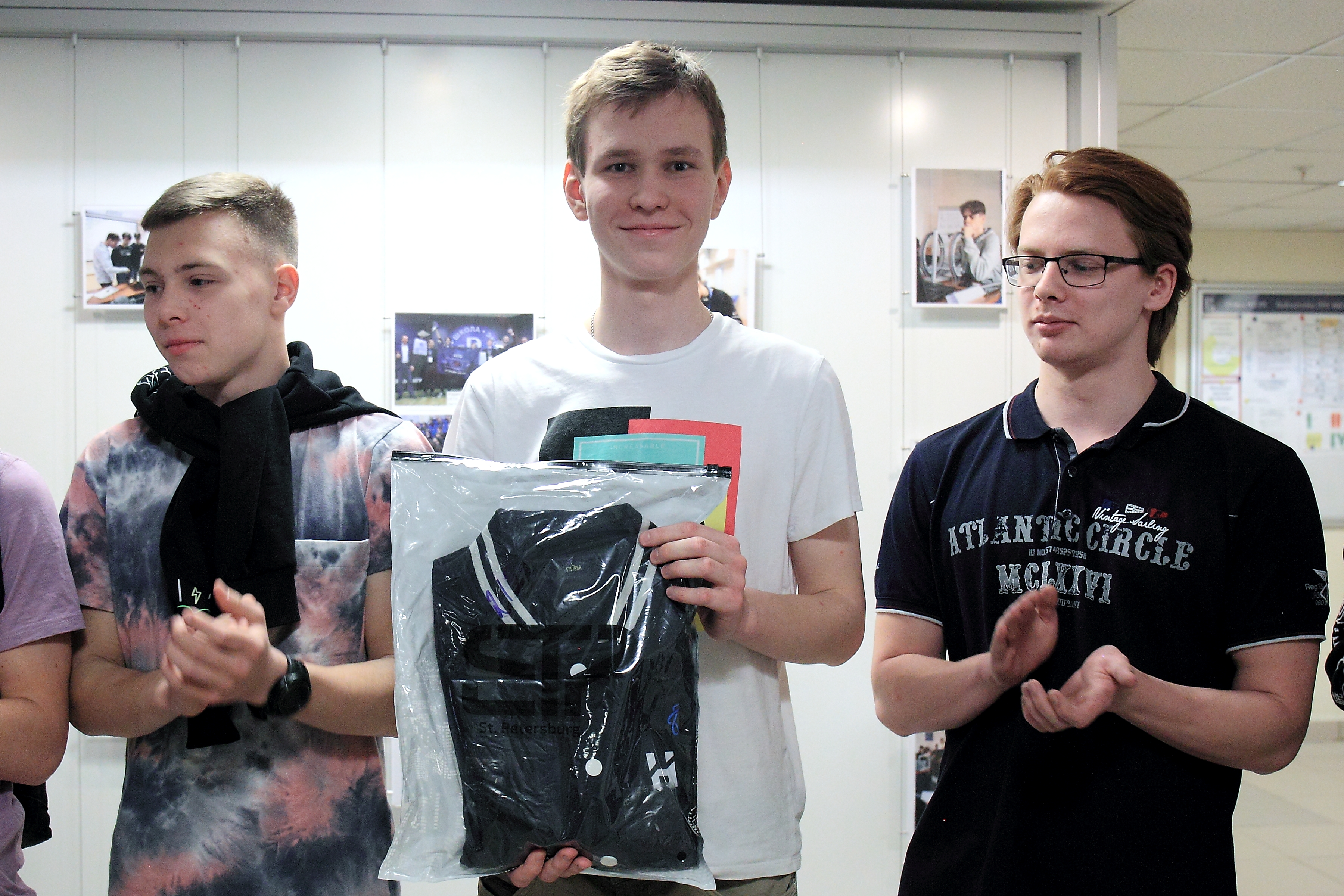In Space with MIEM: All Systems Go!
On April 12th, the traditional Big Space Break took place at the HSE MIEM. This interactive event for students and staff was organized by specialists from the Laboratory of Space Vehicles and Systems' Functional Safety.
Cosmonautics Day is a particularly important date for MIEM. In 2015, a Mission Control Centre for Small Spacecraft with a working group on the creation of a hardware and software complex in the field of space technologies and a Laboratory for the design of small spacecraft using a unique test stand for semi-natural modeling were opened on as part of the Laboratory of Space Vehicles and Systems' Functional Safety. In 2021, the first cubesat, developed by MIEM staff and students, was launched into orbit. Now three satellites have been launched and are successfully functioning: CubeSX-HSE, CubeSX-Sirius-HSE and CubeSX-HSE-2.
Specialists from the laboratory told guests at the event about the processes for designing small spacecraft, circuit design and the development of on-board service systems, the basics of orbital mechanics and ballistic calculations for the trajectory of modern satellites. Stands with information about complex testing of equipment in near-operational conditions aroused great interest among the visitors.

Maria Bubnova, Leading Programmer of the laboratory
‘I’m so glad to see so much interest and excitement on the faces of students and schoolchildren visiting MIEM on this day, answering questions, asking about university satellites, and looking at photos of the laboratory. The Big Space Break takes place quickly, in a half-hour slot, but at the same time it is eventful and fun!’
A photo exhibition of satellite images let the participants not only see the Earth from a height of 500 km (the height of the orbits of the HSE satellites), but also appreciate the highly practical role of data analysis, in particular for assessing the possibility of using Earth remote sensing technologies to monitor the environmental situation in the region, finding the distribution of the temperature gradient on the frame, observing the formation of cyclones and even preventing the onset of forest fires. This kind of monitoring is only a small part of the work carried out by the Mission Control Centre at MIEM. The activity of the laboratory opens up opportunities for attracting talented students interested in developing real orbiting devices.

The online quiz for the participants of the Big Space Break has traditionally been a highlight. Students had the opportunity to prove themselves as historians and space explorers, answer general questions and solve tricky tasks set by the presenters. The winners received HSE merch: T-shirts, badges, and bracelets. Maxim Konyushenko, first—year student of the programme in Applied Mathematics, who won the quiz, got an HSE bomber jacket. ‘I am very glad that we have such events. I am fond of space, and perhaps my future profession will be related to it,’ says Maxim. ‘Now I am working on a project with Sergey Aksenov, where we are engaged in the study of libration points.’
Text by Valentina Kasilova, 2nd-year student of the programme in Information Security
See also:
HSE University Satellites: Three Years in Orbit
In March 2024, HSE University celebrated an important milestone — the third anniversary of the successful operation in orbit of its first CubeSX-HSE and CubeSX-Sirius-HSE satellites. These spacecraft, created on the basis of the CubeSat platform for Earth observation, continue to function actively, confirming high technological standards and reliability of the university's developments.
‘We Control the Flight of Small Spacecraft’: How HSE University Launches Satellites
Following the meeting with participants of the 3rd Young Scientists Congress, Russian President Vladimir Putin assigned the government to include the creation and launch of small spacecraft in a new national project. Universities will also be involved in the project. Dmitrii Abrameshin, Head of the Mission Control Centre at the Moscow Institute of Electronics and Mathematics at HSE University, spoke about the mechanism of small satellites and which satellites have already been launched by HSE University.
HSE University’s Third Satellite Launched from Vostochny Cosmodrome
The small CubeSX-HSE-3 spacecraft was created by students and staff of the HSE Tikhonov Moscow Institute of Electronics and Mathematics. It is based on the OrbiCraft-Pro 3U platform by Sputnix. The work was carried out as part of the Space-π project with support from the Innovation Support Fund.
HSE University’s First Satellite Travels 478.7 Million km
The satellite entered orbit two years ago. The launch of the Soyuz-2.1a rocket with a Fregat upper stage and 38 satellites on board, including CubeSX-HSE, took place on March 22, 2021 at the Baikonur Cosmodrome.
Second HSE University Satellite Launched from Baikonur
On August 9, a Soyuz 2.1b rocket launched with a payload of HSE University’s second satellite, which will monitor the land surface of the Arctic region. HSE MIEM Deputy Director Andrey Abrameshin spoke about the university’s space plans, while Top Class competition winner Alexey Gilenko shared his impressions of the launch at Baikonur Cosmodrome.
HSE University Is Preparing to Launch its Second Satellite into Space
Only one year ago, the first HSE University satellite, developed by specialists and students from the Laboratory of Space Vehicles and Systems’ Functional Safety of the HSE Tikhonov Moscow Institute of Electronics and Mathematics (MIEM HSE) and the Sputnix space company, was launched into orbit. And now, the date of the second HSE University’s satellite launch has been announced: Roscosmos will send it into space from Baikonur Cosmodrome on August 9th, 2022.
'Our Work Will Be Useful in the Search for Earth Twins’
Why is space so fascinating? Who is hindered by the Earth's geocorona? What personal qualities are essential for a research physicist, and how will academic careers regain their prestige? These were the questions that came up in HSE News Service’s interview of Igor Balyukin, a Senior Lecturer of the HSE Faculty of Physics and the winner of the 'Best Work Performed by Young Scientists' nomination category of the RAS Space Research Institute competition.
Dust Cloud around the Moon
HSE researchers, together with colleagues from Space Research Institute of RAS, MIPT, and the University of Colorado, ventured to find out where the plasma-dust cloud around the Moon comes from. To do this, they compared theoretical calculations with experimental data and theorized that this cloud likely consists of matter that rose from the Moon’s surface as a result of meteoroid collisions.


